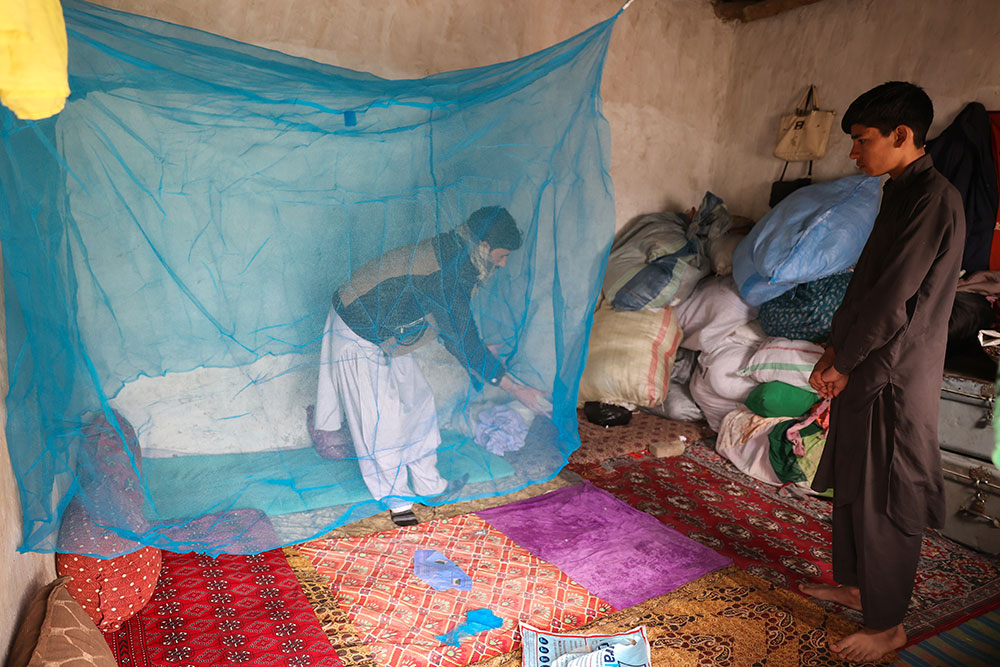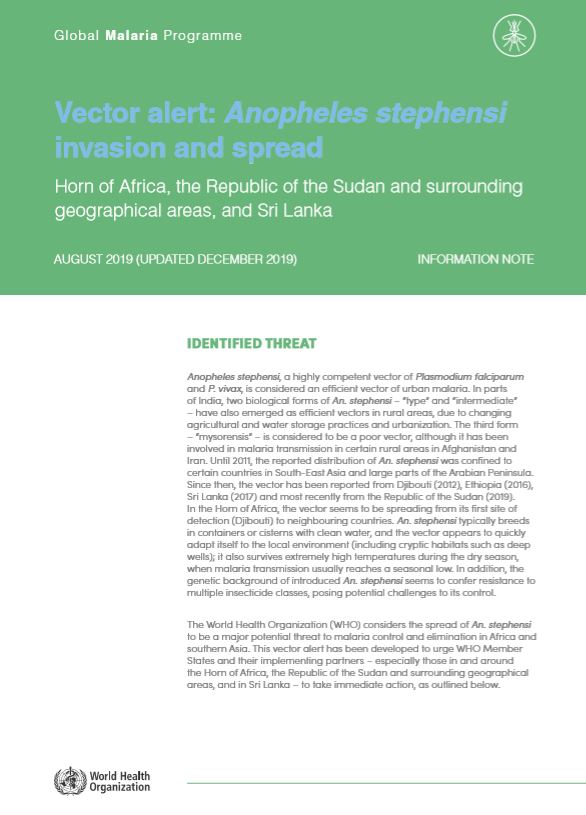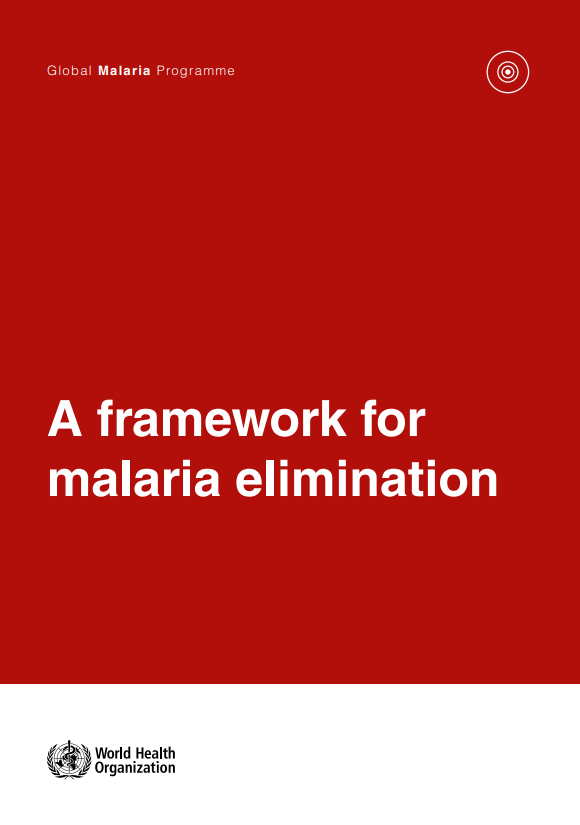 A local resident in Chahar Misra village, Behsud, Nangarhar, puts up a bed net. Photo credit: WHO/WHO Afghanistan
A local resident in Chahar Misra village, Behsud, Nangarhar, puts up a bed net. Photo credit: WHO/WHO Afghanistan
22 April 2024– Malaria is a life-threatening disease that affects millions of people globally every year. About 77% of Afghanistan’s population lives in areas at risk of malaria; 27% of the population lives in areas at high risk of the disease. Nangarhar, in the east, is one of the most highly endemic provinces, accounting for close to half of all malaria cases in the country.
WHO is supporting the national malaria control programme to raise awareness of the enduring public health problem with the help of community health workers like Ghulam Nabi. The 40-year-old schoolteacher from Nangarhar has been working with local communities for almost 2 decades to do his bit to fight malaria.
As the hot season approached, Ghulam gathered a few dozen residents of Chahar Misra village, Behsud district, Nangarhar, to tell them about preventive measures against malaria.
“Using bed nets during the night while sleeping, removing ditches and keeping hygiene will protect you and your family against malaria,” he told participants.
Malaria cases in Ghulam’s locality have declined by about 85% year on year, thanks to his ongoing commitment to community mobilization.
“I provide people with necessary information about hygiene practices and use of bed nets,” Ghulam explained. His wife is helping him to reach women in the area with health messages, as he is unable to talk to them directly owing to social and cultural norms.
Ghulam’s family was directly affected by malaria 17 years ago. This episode in part motivated him to volunteer as a community health worker.
“After witnessing my 2 daughters and a son suffer from very high fever and shivering, I was so worried. I immediately took them to the nearest doctor,” Ghulam recalled. “They were diagnosed with malaria, a disease that was not unknown to us. My [then] 4-year-old daughter’s condition was unbearable. I couldn’t see her in that situation.”
That is when Ghulam decided to do something about the problem. The next day, a health team visited the school where he teaches and asked him to support public awareness in his area. After following up with the health team, Ghulam received trainings on how to raise awareness about malaria.
“I learned essential skills and techniques related to community engagement, as well as got information about malaria, its common symptoms and treatment process,” he said.
Having been trained on malaria prevention, Ghulam enlisted the support of villagers to begin work to get rid of ditches, swamps and temporary rain pools, and raise awareness in Chahar Misra. For 17 years now, he has run awareness sessions for groups of between 10 and 70 people at a time. Fellow members of his community are now aware of the disease, its symptoms and how to prevent malaria.
“People were not utilizing bed nets, but with the support of religious leaders, I persuaded them to adopt this preventive measure,” said Ghulam. “People are now more careful about their health and try to protect themselves and their children against malaria mosquitos.”
The impact that his work has had on the community gives Ghulam great satisfaction: “Every time I encounter villagers after these sessions, I feel gratified that I’ve played a role in preventing this dangerous disease.”








